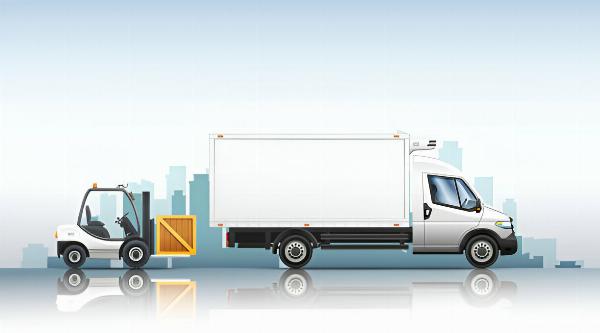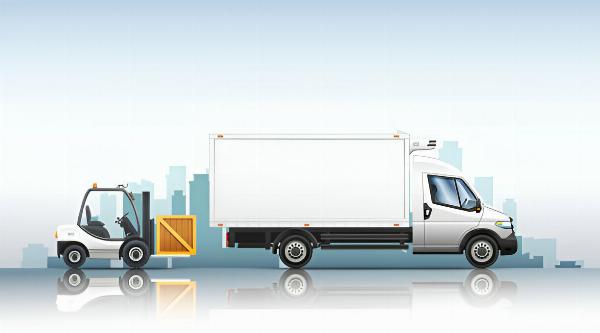Revving Up Success: A Comprehensive Business Plan for Hot Shot Trucking

Strong 8k brings an ultra-HD IPTV experience to your living room and your pocket.
Introduction
The trucking industry is a vital component of the American economy, playing a key role in transporting goods and materials across the country. Among the various niches within this sector, hot shot trucking has emerged as a promising business opportunity. Hot shot trucking involves the expedited transport of smaller loads, often requiring specialized equipment and quick turnaround times. This article outlines a comprehensive business plan for starting a hot shot trucking business, covering market analysis, operational setup, financial projections, and marketing strategies.
Market Analysis
Industry Overview
The hot shot trucking industry is characterized by its flexibility and the demand for quick, reliable freight services. Businesses increasingly rely on hot shot trucking to meet just-in-time delivery requirements, particularly in sectors like construction, oil and gas, and e-commerce. According to IBISWorld, the trucking industry is projected to grow steadily, driven by increased demand for freight services.
Target Market
Hot shot trucking primarily serves businesses that need fast delivery of goods. This includes:
Construction Companies: They often require materials to be delivered on short notice.
Oil and Gas Companies: Specialized equipment and materials frequently need to be transported quickly.
E-commerce Retailers: Online retailers looking for expedited shipping options.
Manufacturers: Companies needing just-in-time inventory management.
Identifying your target market will help tailor your services and marketing strategies effectively.
Competition Analysis
The hot shot trucking market has moderate competition, with numerous small operators and a few larger companies. To differentiate your business, focus on providing exceptional customer service, reliability, and niche services such as same-day delivery or specialized cargo handling.
SWOT Analysis
Conducting a SWOT analysis can help identify the strengths, weaknesses, opportunities, and threats related to your hot shot trucking business:
Strengths: Flexibility, faster service, and the ability to handle diverse loads.
Weaknesses: Higher operational costs and potential driver shortages.
Opportunities: Growing demand for expedited shipping and niche markets.
Threats: Economic downturns, fluctuating fuel prices, and regulatory changes.
Business Structure
Business Model
Your business can operate as a sole proprietorship, partnership, or limited liability company (LLC). An LLC is often the preferred choice due to liability protection and tax advantages. Register your business name and obtain any necessary permits and licenses specific to the trucking industry.
Services Offered
A successful hot shot trucking business should offer a range of services, including:
Expedited freight delivery
Same-day delivery
Specialized equipment transport
Load consolidation services
By diversifying your service offerings, you can cater to a broader range of clients and increase your revenue streams.
Equipment and Fleet Management
Investing in the right equipment is crucial. Hot shot trucking typically requires medium-duty trucks (e.g., 1-ton trucks) and flatbed trailers. Consider the following when selecting your fleet:
Vehicle Type: Choose reliable trucks known for durability and efficiency.
Trailer Options: Flatbed trailers are versatile and suitable for various cargo types.
Maintenance Plan: Establish a routine maintenance schedule to minimize downtime and extend the lifespan of your vehicles.
Regulatory Compliance
Compliance with local, state, and federal regulations is critical. Obtain your Commercial Driver's License (CDL) and ensure all vehicles are DOT compliant. Familiarize yourself with the Federal Motor Carrier Safety Administration (FMCSA) regulations, including hours of service, vehicle inspections, and safety requirements.
Operational Setup
Location and Facility
Choose a strategic location that allows easy access to major highways and your target markets. Consider leasing a small office space with a yard for parking and maintenance. This can serve as your operational hub, where you manage logistics and handle customer service.
Staffing
Your staffing needs will depend on the scale of your operation. Initially, you may start with:
Drivers: Hire experienced drivers with a clean driving record and valid CDL.
Logistics Coordinator: Consider hiring someone to manage routes, schedules, and customer inquiries.
Administrative Staff: As your business grows, you may need additional support for accounting and customer service.
Technology and Software
Investing in technology can streamline your operations. Consider using:
Fleet Management Software: This can help track vehicle location, maintenance schedules, and driver performance.
Routing Software: Optimize routes to reduce fuel costs and delivery times.
Accounting Software: Manage finances, invoicing, and payroll efficiently.
Financial Projections
Start-up Costs
Start-up costs can vary significantly based on your location, the scale of your operation, and the equipment you choose. Common expenses include:
Vehicle Purchase/Lease: $30,000 to $70,000 per truck
Trailers: $5,000 to $15,000
Insurance: $5,000 to $10,000 annually
Permits and Licenses: $1,000 to $3,000
Office Setup: $2,000 to $5,000
Marketing: $1,000 to $3,000
Overall, initial investment could range from $50,000 to $100,000.
Revenue Projections
Revenue will depend on factors such as the number of loads transported, pricing per load, and operational efficiency. On average, hot shot trucking rates range from $1.50 to $3.00 per mile, depending on the load and distance. With a solid client base, you could aim for gross revenue between $150,000 and $300,000 in your first year.
Break-even Analysis
To determine your break-even point, calculate your fixed and variable costs. Your break-even analysis will help you understand how many loads you need to transport monthly to cover costs and begin generating profit.
Profit Margins
Typical profit margins for hot shot trucking can range from 10% to 25%, depending on operational efficiency and market conditions. Focus on managing costs and maximizing revenue to improve your profit margins over time.
Marketing Strategy
Branding
Creating a strong brand identity is crucial for establishing your business in the market. Develop a logo, choose a color scheme, and create a professional website that showcases your services and expertise. Your brand should reflect reliability, speed, and professionalism.
Online Presence
In today’s digital age, having a robust online presence is essential. Consider the following strategies:
Website: Develop a user-friendly website that provides information about your services, pricing, and contact details. Include customer testimonials to build credibility.
Social Media: Utilize platforms like Facebook, Instagram, and LinkedIn to promote your services, engage with potential clients, and showcase your fleet.
SEO Optimization: Implement SEO strategies to improve your website’s visibility in search engines, making it easier for potential clients to find you.
Networking and Partnerships
Building relationships with other businesses can lead to valuable partnerships. Attend industry conferences, trade shows, and networking events to connect with potential clients and collaborators. Establishing partnerships with local businesses can also lead to consistent work.
Advertising
Invest in targeted advertising to reach your audience effectively. Consider:
Online Ads: Utilize Google Ads and social media advertising to promote your services.
Local Newspapers: Advertise in local publications to reach nearby businesses.
Trade Associations: Join trucking associations that offer advertising opportunities and networking events.
Conclusion
Starting a hot shot trucking business can be a rewarding venture in a growing industry. By conducting thorough market research, establishing a solid business structure, and implementing effective operational and marketing strategies, you can position your business for success. Focus on providing exceptional service, building relationships, and continuously optimizing your operations to ensure profitability and growth in the competitive trucking landscape.
With dedication and careful planning, your hot shot trucking business can thrive and contribute significantly to the logistics and transportation sector.
Note: IndiBlogHub features both user-submitted and editorial content. We do not verify third-party contributions. Read our Disclaimer and Privacy Policyfor details.







